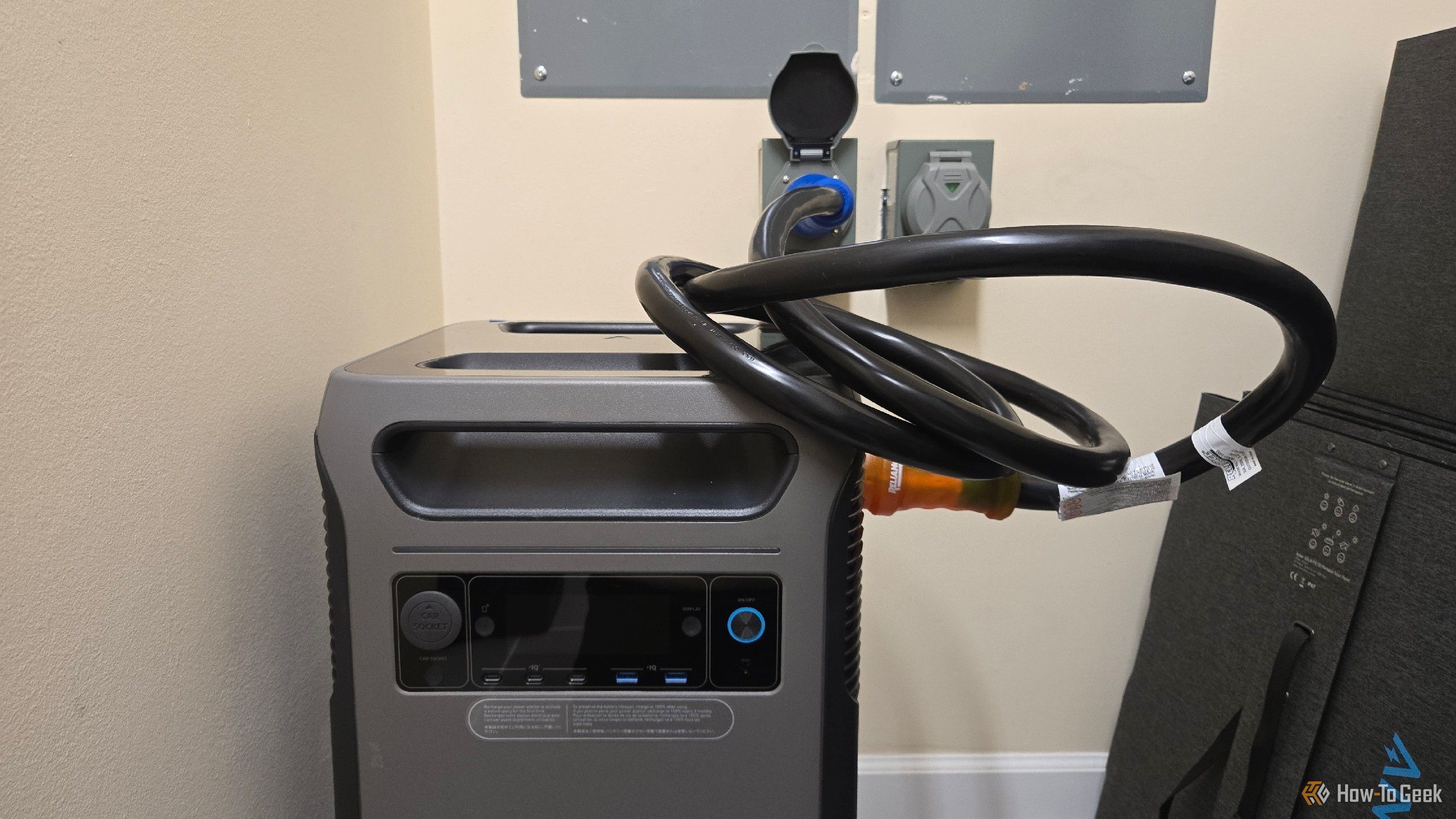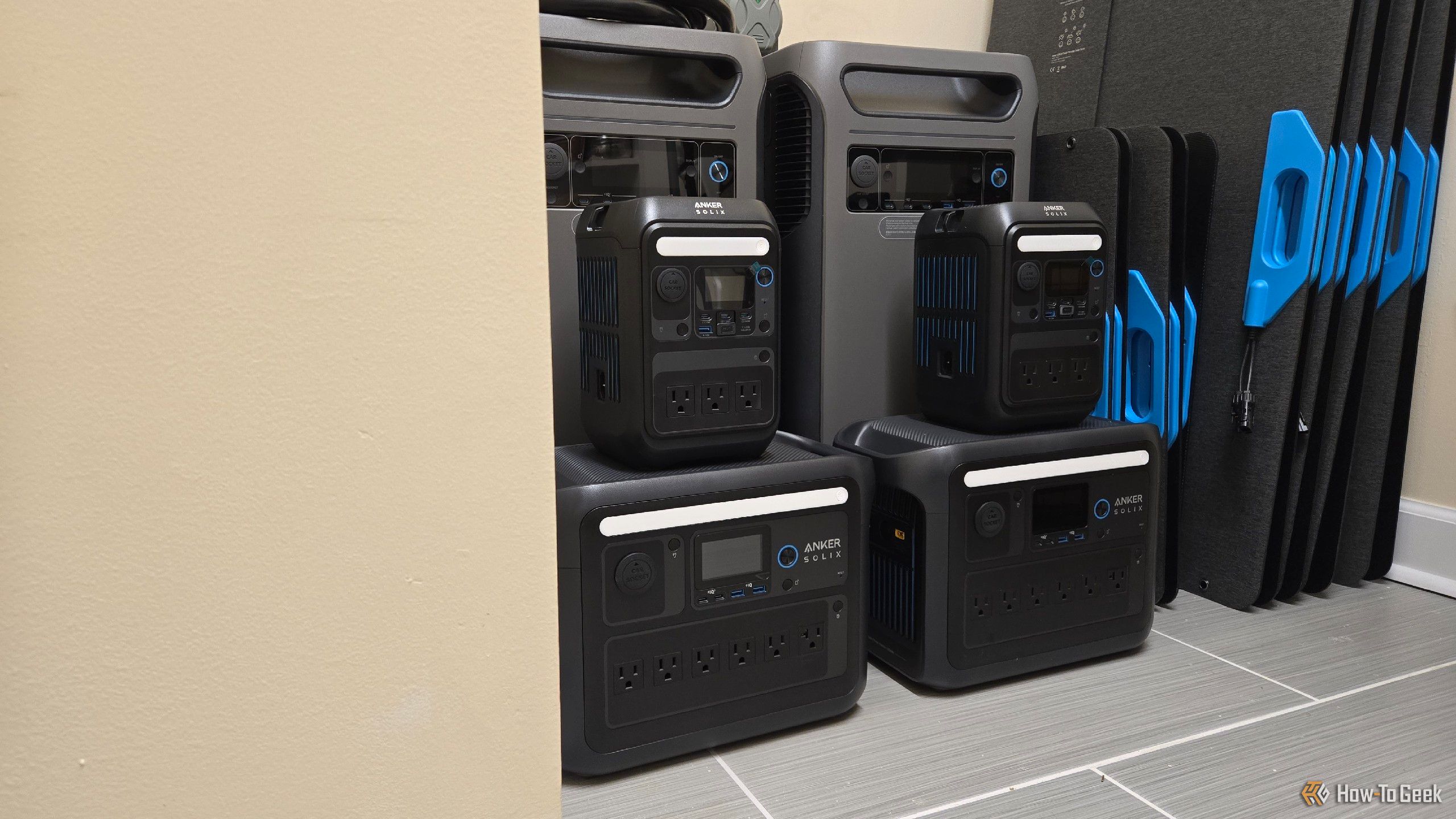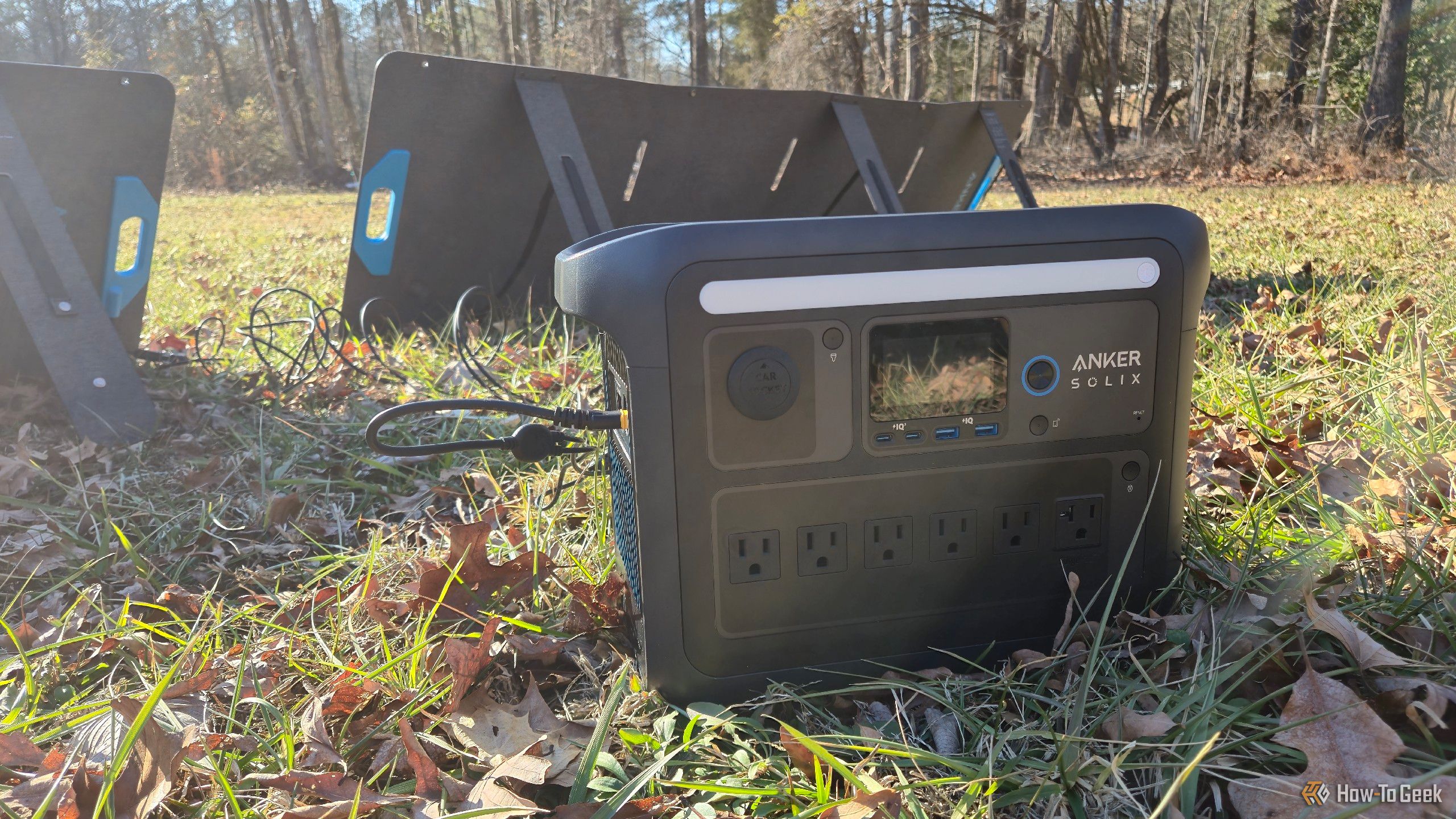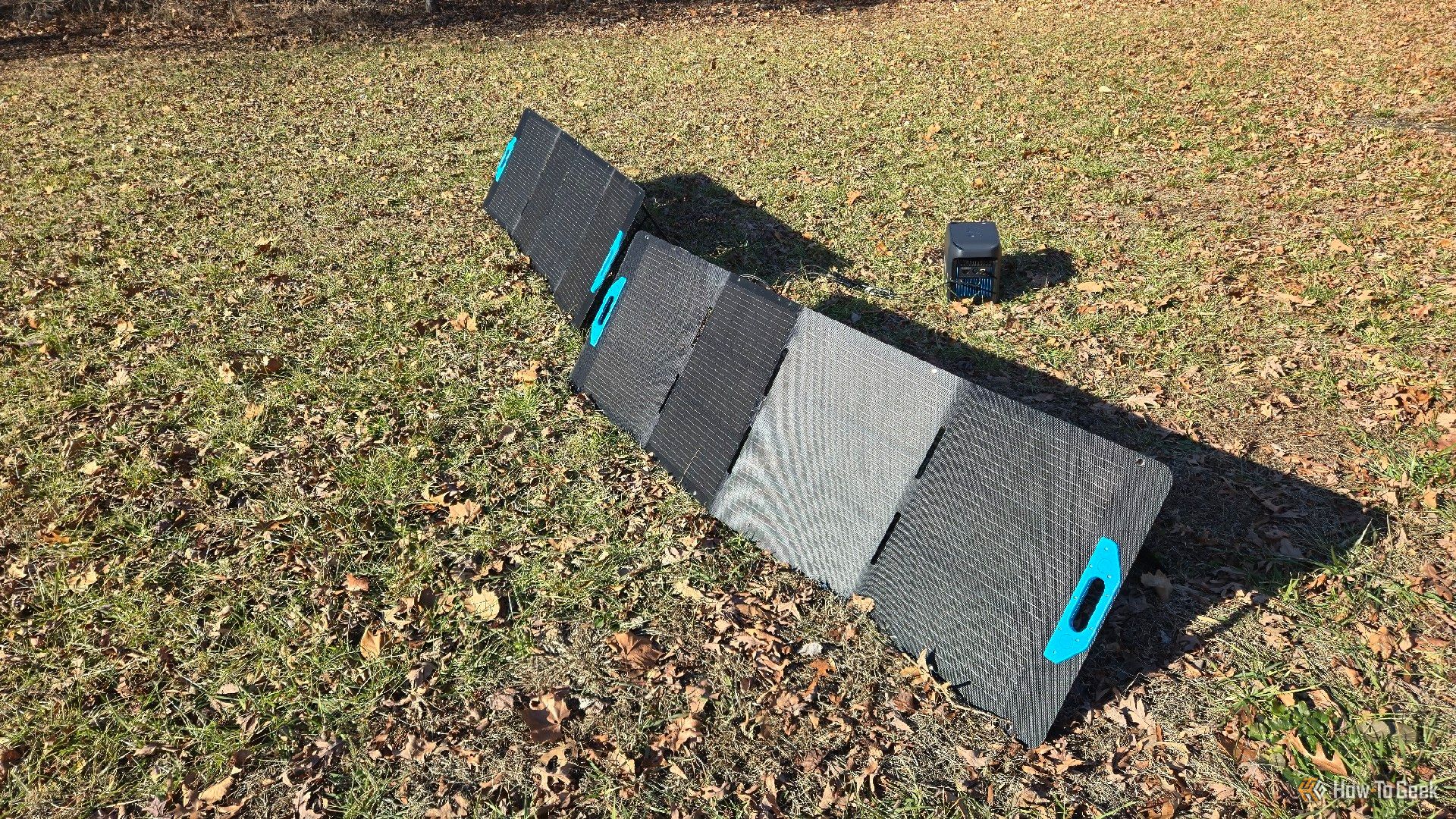Summary
- Opting for portable solar generators over a built-in home battery is cheaper, offering comparable storage at a much lower price.
- Portable power stations allow for easy expansion without the need for contractors.
- Using multiple portable power stations prevents a single point of failure and is a mobile solution that can go with you on adventures, when moving, or when evacuating.
This winter, my wife and I decided it was time to invest in a home energy backup plan. Instead of a built-in home battery like a Tesla Powerwall, we decided to buy an abundance of Anker portable power stations instead.
It Comes Down to Cost
There’s a trade-off that comes with opting for portable solar generators over a built-in home backup battery, but there’s one primary reason we decided to go with the former: cost. You can get comparable storage for as low as half the price by going with a portable system. This is one case where portability actually costs you less.
We have solar panels on our roof that use Enphase IQ inverters. That means we’d likely go with an Enphase IQ battery system rather than Tesla’s Powerwall. Quotes for either setup tend to start at around $12,000 to $15,000 for a 10kWh battery. That’s not much power, all things considered, so systems can easily hit double or triple that as you increase the storage. These latter numbers are the estimates we were faced with when inquiring about built-in battery storage.
With Anker’s SOLIX line of portable power stations, we have a lower upfront cost, and we can spread the investment out over time. We don’t need to buy 30kWh all at once. We can get a generator plug installed near our home breaker, buy an Anker F3800 for under $3,000, and plug it in. This way, we can power things like our well pump and septic tank, which stop working in our rural home when the power’s out.
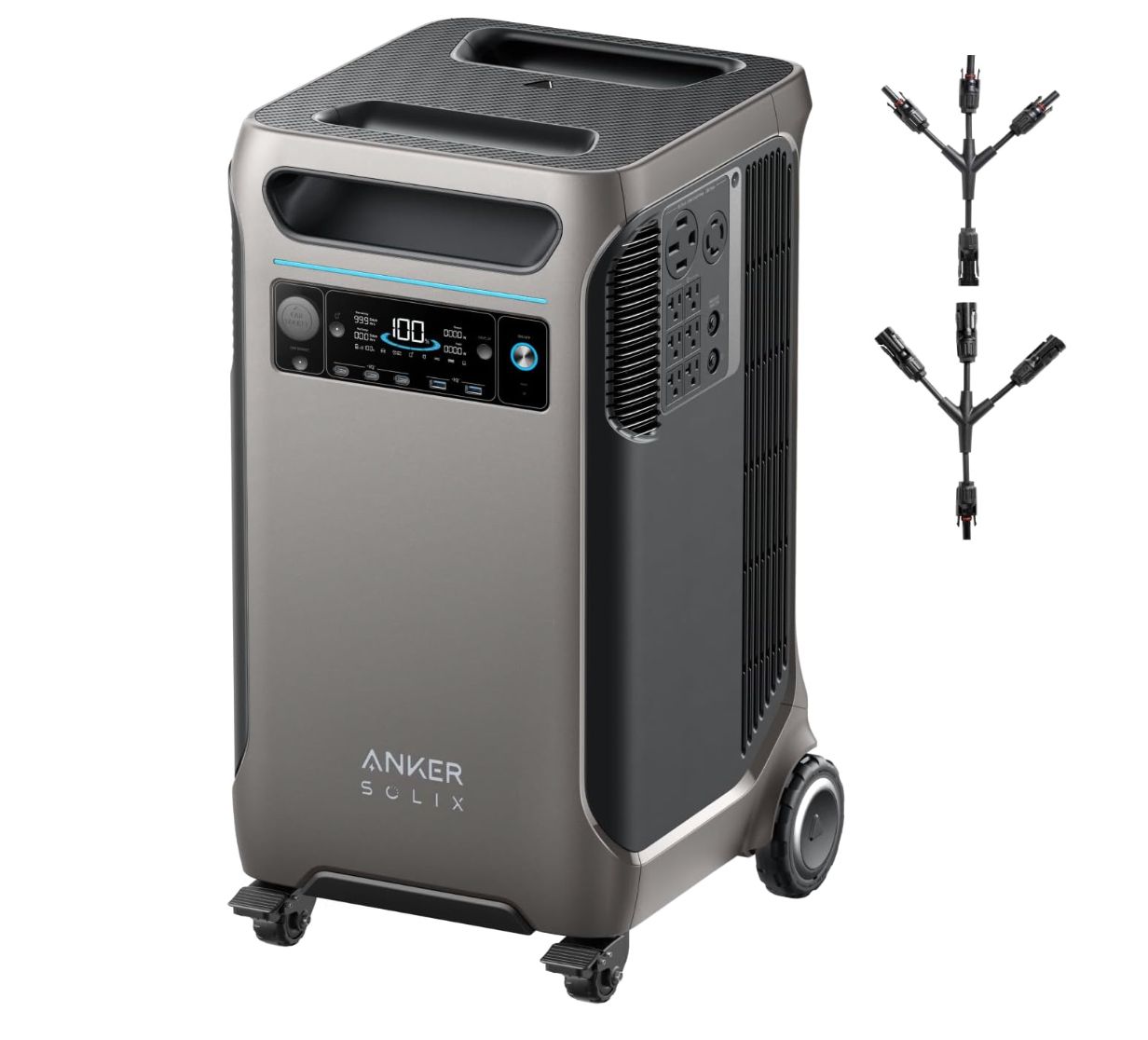
Anker SOLIX F3800 Power Station
Will this unit last for days? Not on its own. But without pulling out any solar panels, we know we have enough power to handle critical loads for the majority of the power outages that we face. Where we live, power outages are generally handled within a few hours.
We Can Expand Without Calling an Electrician
After getting an electrician to install our generator plug, we no longer need to involve a contractor to upgrade our system. Our electrician put in a standard interlock kit that is compatible with any generator.
If we decide to throw part of our tax refund next year at a few expansion batteries, we can double our storage without having to get a quote from a solar company. We can buy them from Amazon or Best Buy if we so choose. If we want to switch brands or buy an upgraded model in a few years, we can do that, too.
Not only that, but we have varied options in the way we expand. We didn’t just get a couple of F3800s. We also have two Anker SOLIX C1000‘s and two Anker SOLIX C300’s (basically the same as the Anker C300 DC, but with three AC ports).
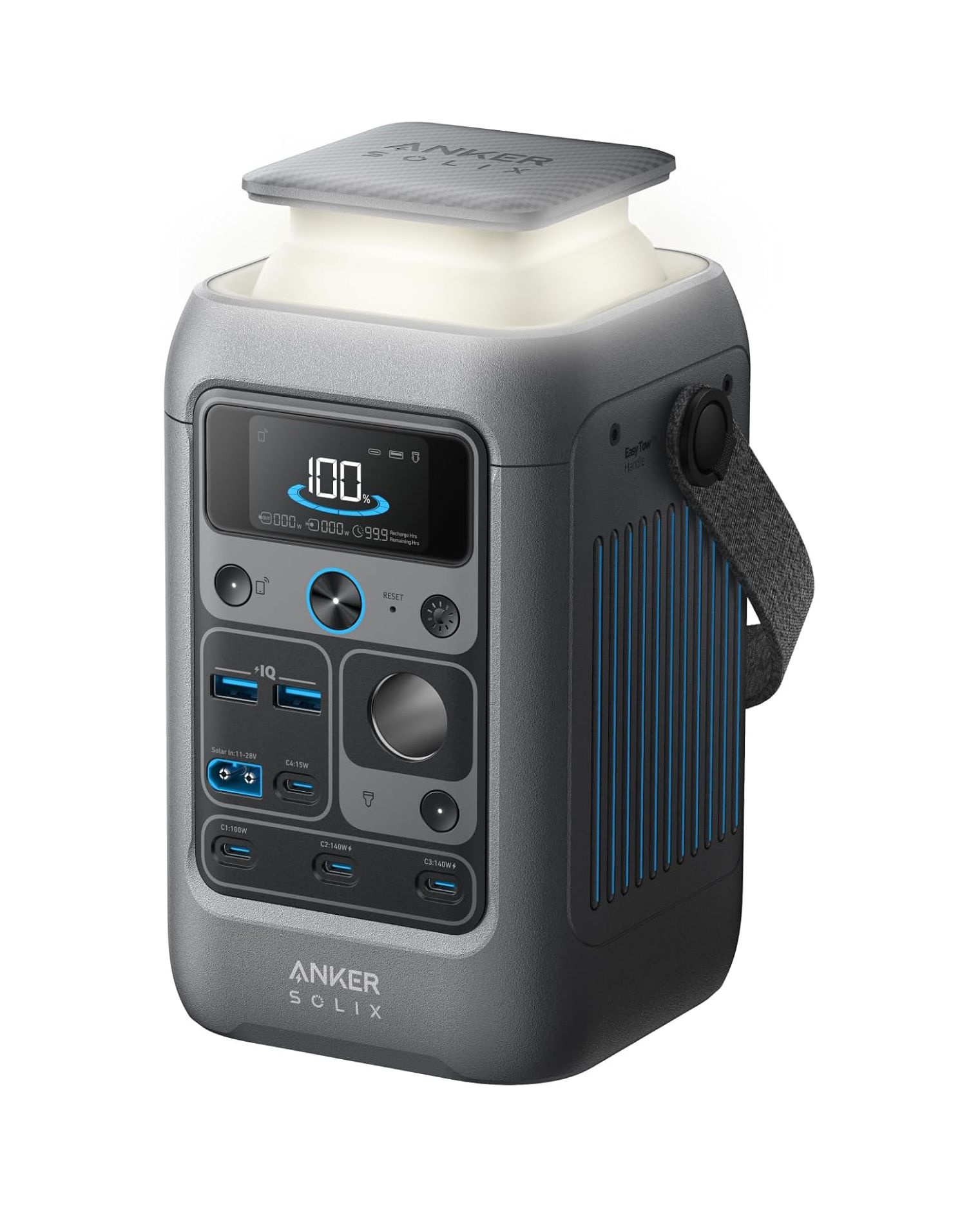
Anker SOLIX C300 DC
$150 $200 Save
$50
- Dimensions
-
4.9 × 4.7 × 7.9 in
- Weight
-
6.17 lbs
Altogether, that’s just over 10kWh of power spread out across six batteries. The next time a major sale comes, I can grab a couple more batteries and increase our total storage as easily as buying a new phone.
There’s No Single Point of Failure
With a built-in battery, all of your home power goes dark if that battery drains. If said battery fails to begin charging again when the sun comes back up for whatever reason, you’re stuck without power.
With power distributed across multiple stations, we don’t have to deal with a single point of failure. If we check our battery backups and one is down, we still have others to depend on. If a C1000 fully drains after powering a fridge for a day, I can swap it out with another before we go to bed.
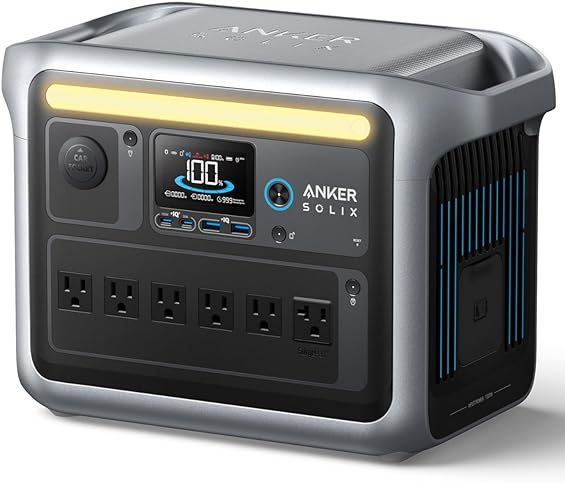
Anker SOLIX C1000 Portable Power Station
$799 $999 Save
$200
- Brand
-
Anker
- Dimensions
-
14.8×8.07×10.5 in
I can have one set of batteries charging outside while the others are in use. In the long run, I’d like to have twice as many batteries as we need to get through a day so that I can alternate charging days indefinitely.
Our Power Can Leave Home With Us
Let’s not overlook the “portable” aspect of these power stations. There are many perks to this. If we invest thousands into this system, all of it can go with us if we were to ever move. The same is true if we find ourselves needing to evacuate during an emergency (okay, the F3800s would admittedly have to stay home).
This also creates abundant options for how we recharge our solar generators. Not only can I drag one out into the front yard and plug in solar panels, but I can load one into a vehicle, take it to a relative’s house that has power, recharge the unit, and bring it back home.
My wife and I both drive EVs. Our models don’t have AC outlets, but our next vehicles potentially could. That means we could recharge our 4kWh batteries using the 60-80kWh batteries inside our vehicles. That is many days’ worth of power for critical loads.
Our smaller stations can go with us on road trips. Portable power can be helpful for camping, cookouts, and any number of outdoor events. There are also plenty of times when it would be nice to recharge devices inside the car. Abundant power and fast charging is handy to have around during the second or third charging stop on an EV road trip when the kids have each drained their tablets and are crying over who gets to use the one charging cable.
Sadly, We Can’t Use the Panels on Our Roof
There are downsides to going with solar generators rather than a full, integrated home battery. The primary issue comes down to how we recharge the batteries. Our home has a large solar array on top that gets direct sun almost year-round. It shuts down when the power goes out, and our solar generator can’t tap into those panels. Instead, we needed to buy portable solar panels instead.
You don’t technically need to buy portable panels for portable generators. You can order the same rigid solar panels that go on a roof and wire them up, depending on the power station you’re working with. A downside of Anker SOLIX products is that their solar input is limited in such a way that it’s hard to reach their max speeds using any panels other than Anker’s.
Even then, the F3800’s max input speed of 2400 watts is small compared to how much solar power is available to something like a Powerwall. Portable power systems may be cheaper than going with an integrated home battery, but the slow ability to recharge them means you have to operate from a mindset of limited power, prioritizing your critical loads rather than using power as you normally would when the grid is up.
Charging Solar Generators Takes Physical Effort
Integrated home batteries are like standby gas or propane generators. They automatically kick in when the grid goes down, and they continue to pull energy in as they operate. You don’t have to do anything. Portable power stations are like portable gas generators. While you don’t have to go outside and fill them up, running an extension cord into the house, you do have to go outdoors to charge them.
Charging isn’t that big an issue with smaller units like the C1000 and 100w panels (like the Anker 625 100w panels, since replaced with Anker’s PS100). 200w panels aren’t as light, and 400w panels are actually a bit heavy (they’re big and bulky, too).
As for the F3800, well, it weighs only around a dozen pounds less than I do. I can move the thing, but not easily. It’s better to invest in a long extension cord that can connect to solar panels outdoors than try to place this thing out in the yard. Frankly, charging this system isn’t a viable option for everyone.
Still, even if the largest unit is heavy, the C300 is light enough for a child to carry to their room. I want my kids to be able to grab one to power a Nintendo DS or a night light. The slightly larger C1000 can last over two days if it’s only being used to heat up quick meals.
With so much battery-powered tech, we can feel largely comfortable going about our day-to-day lives even if all the home outlets don’t work. Having an abundance of portable battery banks gives us that freedom, and we can build up that abundance bit-by-bit (like adding a solar-powered umbrella or using a battery-powered cooler instead of a fridge) without getting giant quotes from solar companies each time we do.


